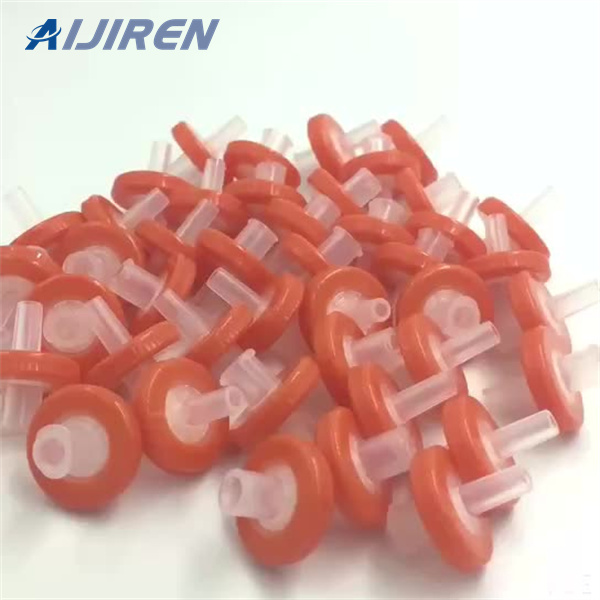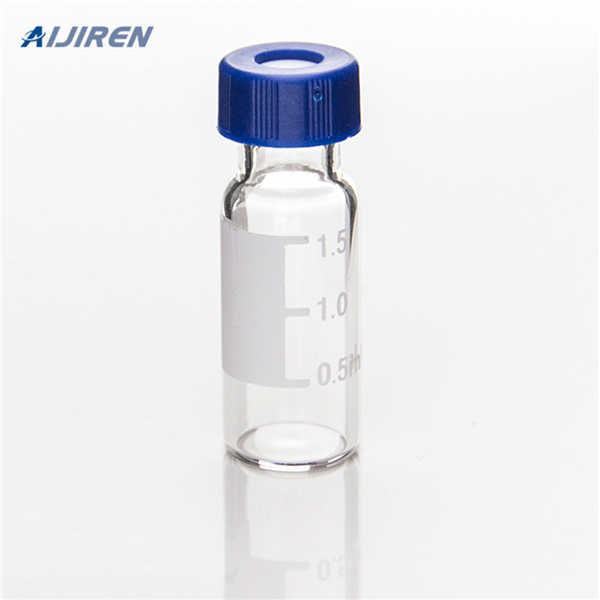
A syringe filter (or wheel filter) is a single-use, membrane-based device used for the removal of particulate impurities from small (≤ 100 mL) liquid samples ( Figure 1 ).

The Thermo Scientific SDS-PAGE Sample Prep Kit contains a proprietary resin that binds proteins in the presence of an organic phase. Any interfering contaminants are washed away and proteins are then eluted in a buffer that is compatible with the BCA Protein Assay, allowing quantitation of a portion of the processed sample.

Filtration is used to reduce sample complexity, improve clarity of viscous samples, and reduce background signals resulting in increased signal-to-noise ratios in analytical tests. Common Filtration Applications Types of Filtration Processes & Procedures

1) First layer is a larger-porosity membrane. It traps larger particles, which travel in non-linear path, thereby preventing clogging and creating more surface area in which to capture the particulates 2) The second, smaller-porosity membrane, traps smaller particles resulting in all unwanted particles being removed from sample

Allow to clot for 30 minutes before centrifugation. Remove serum from cells promptly after centrifugation and store in metal-free vial. Gold SST 5 ml Serum clot activator, gel separator Various tests Mix 8-10 times and allow blood to clot for 15-30 minutes before centrifugation. Yellow ACD 10 ml. Immediately after collection, invert the tube 8

Jul 7, 2023 · 7th Jul 2023 Syringe Filters vs Filter Vials: What is the Best Method for Filtration? For most chromatography applications, a sample taken directly from the source is usually not in a form that can be directly placed into the analytical instrument.

Mar 19, 2021 · Centrifuge the samples at 100,000 × g, 4°C for 2 h. 25. Remove the PBS and lyse the pellet with 250 μL of ice cold lysis buffer. a. Resuspend the pellet by scrapping the pellet with a pipet tip and extensive pipetting. b. Transfer the sample to a new 1.5 mL microcentrifuge tube. c. Incubate the samples on ice for 15 min. d.

13 mm Puradisc Syringe Filters (sterile) Membrane* Without tube tip With tube tip Nylon PVDF PES PVDF Quantity/pack Pore size (µm) 0.1 6786-1301 50 0.2 6786-1302 6791-1302 6780-1302 6778-1302 50 0.45 6791-1304 6780-1304 50 * PES = Polyethersulfone; PVDF = Polyvinylidene di uoride 25 mm Puradisc Syringe Filters Membrane* Nonsterile Sterile

Apr 3, 2018 · This method is basically performed with a bench top centrifuge, which requires extremely high centrifugal force to flow various solvents (sample, washing buffer, and elution buffer), as shown Fig

Sep 12, 2021 · The sample is placed in the upper reservoir and the unit is placed in a centrifuge. Upon spinning the unit at \(2000 \times g-5000 \times g\), the filtrate collects in the bottom reservoir and the retentate remains in the upper reservoir. (b) A 0.45 μm membrane syringe filter. The photo on the right shows the membrane filter in its casing.

Mar 19, 2021 · Centrifuge tubes in Centrifuge 5810 R at 3,000 rpm for 10 min at 4°C (Figure 1 B). Note: While samples are in centrifuge, we suggest turning on/setting Optima XPN-80 to 4°C and placing SW 32.1 Ti Swinging-Bucket rotor in cold room to allow sufficient time for pre-cooling. 8. Discard pellet and transfer supernatant into new 50 mL conical tubes. 9.

Use these all-plastic disposable syringes with your Titan3, Target2, and Choice Basic syringe filters. Comprising a polypropylene barrel and polyethylene plunger, these syringes eliminate problems with rubber or synthetic plunger gaskets and requires no silicone or oil lubricant in the barrel. Choose from in 1, 3, 5, 10, 20, 30, and 50 mL sizes.

filter can be used for, with no or minimal concern related to adsorption. Sample medium is another factor that can impact potential adsorption, as it can directly affect compound solubility and membrane wettability. The selection of appropriate filters also depends on the sample medium and the filter membrane’s chemical compatibility.

J.L. Zhou, in Comprehensive Sampling and Sample Preparation, 2012. 1.18.7.3 Centrifugation. Centrifugation has been used to separate colloids from aqueous solution on the basis of particle size and density. The samples are prefiltered to remove particulate material (by definition through a 0.45-μm filter paper) and then placed in centrifuge tubes.

Sample preparation is a necessary step for laboratories that use HPLC. Filtration, solid and liquid phase extraction, and centrifugation are common sample preparation techniques. A lack of understanding of these sample prep procedures can lead to user error, instrument downtime, and increased service requirements.